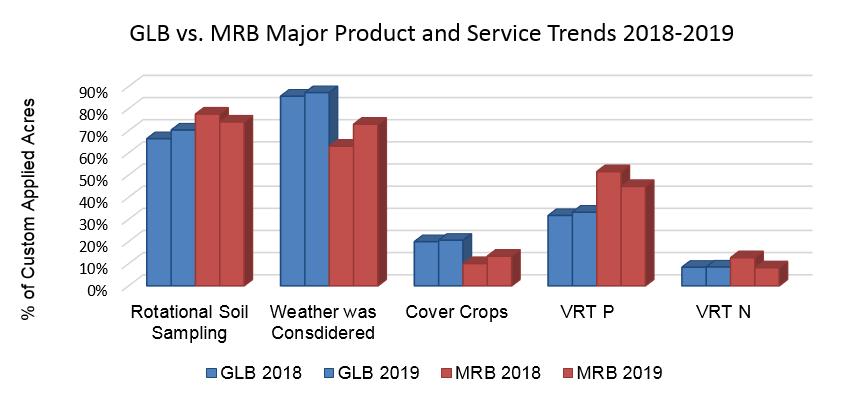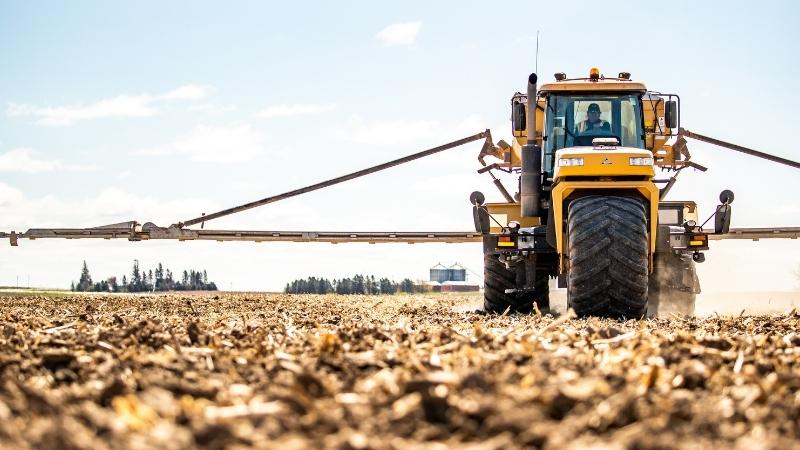Ag Retailers Across the Midwest and East Coast are Advancing Sustainable Practices
The Partnership for Ag Resource Management (PARM), a nonprofit project, has been working with agricultural retailers for almost a decade to increase sales of products and services that retain nutrients on fields and out of waterways. The effort, initiated in 2010, was formed to combat nutrient impairments largely sourced from agricultural production, including harmful algal blooms which can degrade water quality to the point where public water supplies are shut off. The project tracks and reports on retail sales or in other words, farmer adoption, of practices that reduce nutrient losses, like cover crops and variable rate technology, through annual surveys.
This season, 126 retailers participated in the survey, servicing over 8.7 million acres across the Midwest and East Coast. Their combined efforts retained an estimated 71 million pounds of nitrogen and seven million pounds of phosphorus on fields, positively affecting water quality throughout the Great Lakes and Mississippi River Basins. For the first time this year, the annual survey report incorporated the economic savings of these loss reductions per practice. View the full report for details.
Of all acres reported for the 2019 growing season, 16.8% implemented cover crops, approximately 1.5 million acres. This percentage remained the same in the Great Lakes Basin (GLB) from the year prior, with a slight increase in the Mississippi River Basin (MRB), even though the Midwest was hard hit with record rainfall. Wetter conditions throughout spring and fall are becoming more frequent and severe across the corn belt, making it increasingly important to integrate practices like cover crops that can absorb excess water and increase infiltration. Results show most retail locations now offer several cover crops services, including seed sales, termination, and broadcast application. Fifty-five percent of respondents also reported offering cover crop planning services.

Variable rate application of both phosphorus and nitrogen remained the same in the GLB, but slight declines were found in the MRB this year, with a total adoption rate of 46.9% across all acres. Despite the stagnation, variable rate adoption alone retained over 1.7 million pounds of phosphorus and 2.6 million pounds of nitrogen on fields, a savings of $1.8 million in phosphorus if using monoammonium phosphate and $1.2 million and $1.1 million if using UAN 28 and urea respectively.
For the past five years, PARM has supported retail customer adoption of VRT through cost-shares in select states and watersheds. With support from the National Fish and Wildlife Foundation, the EPA’s Great Lakes Restoration Initiative, and the Great Lakes Protection Fund, the project has worked with retailers to implement approximately 30,000 acres of VRT, almost half a million in grant funds. Results show that once growers have a chance to try VRT at no cost, they tend to continue with the practice post program. “Growers that got started with VRT because of PARM’s cost-share have paid for additional VRT acres after seeing the benefits,” states one of the project’s retail participants, Phil Bowsher from The Andersons Fostoria, OH, branch.
Cost-shares are just one helpful tactic to combat both customer and dealer barriers to conservation practice adoption, another area surveyed annually. Next to cost, 27.8% of retailers expressed that communicating and presenting the benefits of cover crops was too challenging, and 12.7% reported the same challenge with precision ag. Just over 15% of respondents stated finding applicants with knowledge and experience in precision ag was also a challenge.
When asked about customer barriers to beneficial practice adoption, retailers reported planning and decision making as a challenge for cover crops (19.8%), as well as too much up-front risk (22.2%) and local climate/soil/topography (46.8%). Retailers also reported customers’ lack of assurance in recommendations as a challenge for cover crops (15.9%), foliar feeding (26.2%) and precision ag (12.7%). Lack of local incentive programs was also a high-ranking barrier to cover crops (19%), strip-till (18.3%), and precision ag (11.1%), important findings for state ag departments to consider this year.
PARM works to address as many barriers as possible by supporting retailers and their customers through incentive programs and educational resources. The project offers free educational webinars featuring the latest nutrient management research from experts across the U.S., online training modules developed in collaboration with the SPARC Initiative (Sustainable Programming for Ag Retailers and CCAs), nutrient stewardship reports, variable rate technology and cover crop incentive programs, and 4R-approved resources including a Phosphorus Loss Reduction Handbook for Agronomists and wallet cards. Several resources offer free Certified Crop Adviser continuing education units, including the survey itself.
As a nonprofit project, PARM relies on grant funders, members, sponsors, and donors to support our cause. Visit partnershipfarm.org to help us support the ag industry succeed in feeding the world while protecting our lands and waters. Donate or sponsor today, or if you are an ag retailer, become a member to receive additional benefits.





